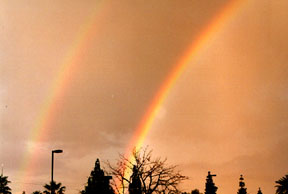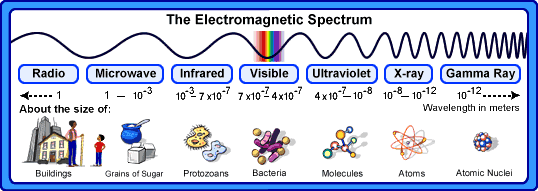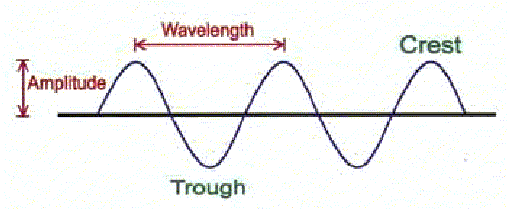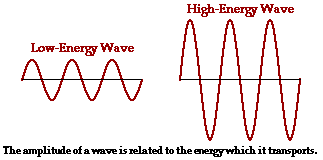As mentioned on the first page, if you tossed a pebble into the water the result would be circular ripples moving outward. These ripples are waves, with a series of crests and troughs. The crests are the high points where the electrical field is the highest and the trough, the low points, have the lowest electrical fields. A wavelength is the distance between two troughs or two crests and the frequency is the number of wavelengths that pass through a given point in one second. The speed of the wave equals the frequency times the wavelength. Longer wavelength have less energy. The higher the frequency, the shorter the wavelength and the lower the frequency the longer the wavelength. The amplitude is a measure of how much energy the wave has.
Electromagnetic are transverse waves. As the wave moves along, the particles in the substance move either up and down or side to side. After the wave has passed the particles are back to where they started. It is like a cork floating in water. The wave goes by and the cork bobs up and down but is still in the same place.
Colour is only possible because of light. Visible light is made up of all different colours. The different colours are caused by the different wavelengths of light. We can see the different colours of light when we see a rainbow. The rain droplets act like tiny prisms and causes the light to breakup into its different colours. A glass prism will disperse the light rays and a rainbow (spectrum) will be seen.
Red, green and blue are the primary colours because when added together will produce white light. By mixing primary colours in pairs, secondary colours are produced. With every colour, there are three main characteristics: hue, lightness (brightness) and chroma.
Hue: gives colours their name - red, blue, green etc. - all are different hues of colour
Lightness: (brightness) the amount of light reflected from the colour
Chroma: refers to the concentration of colour





